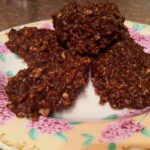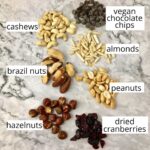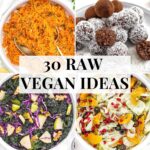Unlock a world of vibrant colors and delicious flavors with kid-friendly raw vegan meals! This isn’t about bland salads; we’re talking about exciting creations that transform healthy eating into a fun adventure for children aged 3-8. Imagine rainbow veggie wraps bursting with nutrients, playfully arranged fruit platters that resemble whimsical characters, and cleverly shaped snacks that make even the pickiest eaters curious. We’ll explore creative presentation techniques, address common nutritional concerns, and offer step-by-step recipes designed to make raw vegan cooking both enjoyable and accessible for busy parents.
Discover how to incorporate essential nutrients like iron, calcium, and vitamin D into exciting meals, overcoming common challenges like picky eating. Learn to create edible art from fruits and vegetables, transforming mealtimes into playful experiences. We’ll delve into simple, yet effective strategies for ensuring your children receive a balanced and satisfying raw vegan diet, supporting their growth and development while fostering a lifelong love for healthy eating.
Incorporating Essential Nutrients in Kid-Friendly Raw Vegan Meals
Creating a vibrant and nutritious raw vegan diet for children requires careful planning to ensure they receive all the essential nutrients for healthy growth and development. A well-balanced raw vegan approach can provide all the necessary vitamins, minerals, and proteins, but it demands mindful selection and creative meal preparation. This section will explore common nutrient deficiencies in children and how to address them using delicious and engaging raw vegan recipes.
Addressing Common Nutrient Deficiencies in Children Through Raw Vegan Meals
Three key nutrient deficiencies often seen in children’s diets are iron, calcium, and vitamin D. Iron deficiency can lead to anemia, causing fatigue and impacting cognitive development. Calcium is crucial for strong bones and teeth, while vitamin D is essential for calcium absorption and overall bone health. Addressing these deficiencies within a raw vegan framework involves strategic food choices and mindful meal planning. For example, combining iron-rich foods with vitamin C-rich foods significantly enhances iron absorption. Similarly, ensuring adequate sunlight exposure or supplementing with vitamin D2 (from plant sources) is crucial for optimal calcium utilization.
Raw Vegan Ingredients Rich in Iron, Calcium, and Vitamin D
The following five raw vegan ingredients are packed with essential nutrients beneficial for children’s growth and development. These ingredients offer a delicious and accessible way to incorporate these vital nutrients into children’s meals.
- Kale: This leafy green is a powerhouse of nutrients, offering significant amounts of calcium and vitamin K, which supports bone health. Imagine vibrant green kale smoothies, blended with sweet fruits like mango or banana to mask any bitterness, or finely chopped kale added to vibrant raw veggie wraps. The deep green color alone is visually appealing to children.
- Dried Apricots: These sun-dried fruits are naturally sweet and a fantastic source of iron. Their chewy texture makes them a fun snack, and they can be added to trail mixes or incorporated into raw energy balls for a boost of iron and energy. The rich orange color is enticing, and their sweetness appeals to most palates.
- Hemp Seeds: These tiny seeds are nutritional dynamos, offering a complete protein profile along with a good amount of calcium, iron, and healthy fats. Sprinkle them on salads, cereals, or add them to smoothies for a creamy texture and nutritional boost. Their slightly nutty flavor and small size make them easily incorporated into various dishes.
- Almonds (soaked): Soaked almonds are easier to digest and provide calcium, magnesium, and healthy fats essential for growth. Almonds can be blended into creamy sauces, added to raw desserts, or enjoyed as a healthy snack. Their creamy texture and mild flavor make them versatile and appealing.
- Mushrooms (certain varieties): Some mushrooms, like shiitake, are good sources of vitamin D when exposed to UV light. These can be added to raw salads or stir-fries for a unique flavor and nutritional boost. Their earthy aroma and diverse textures, depending on the preparation, add an element of surprise and interest.
Ensuring Adequate Protein Intake in Children’s Raw Vegan Diets
Adequate protein intake is crucial for growth and development. Raw vegan diets can easily provide ample protein through creative combinations of plant-based sources. Combining different protein sources is key to obtaining all essential amino acids.
- Combining Legumes and Grains: A classic example is combining raw sprouted lentils with sunflower seeds in a salad or raw veggie burger. The lentils provide a substantial amount of protein, while the sunflower seeds complement the amino acid profile.
- Nut and Seed Butters: These creamy spreads are a fantastic source of protein and healthy fats. Use them as dips with raw vegetables, spread on whole-grain crackers, or add them to smoothies for a creamy texture and protein boost. The variety of nut and seed butters allows for diverse flavor combinations.
- Avocado: Avocados are rich in healthy fats and offer a moderate amount of protein. They are incredibly versatile, adding creaminess to smoothies, salads, or even raw desserts.
- Spirulina: This blue-green algae is a complete protein source, easily added to smoothies or sprinkled on top of salads. Its unique flavor and color make it a fun addition to various meals.
Step-by-Step Recipe for a Kid-Friendly Raw Vegan Meal

This recipe for Rainbow Veggie Wraps is designed to be both nutritious and visually appealing to children, making healthy eating fun and exciting. The vibrant colors and fresh flavors will encourage even the pickiest eaters to try something new. This recipe is easily adaptable to suit various dietary needs and preferences, ensuring everyone can enjoy a delicious and wholesome meal.
Imagine a vibrant swirl of colors, a rainbow of textures, all nestled within a soft, pliable wrap. That’s the essence of the Rainbow Veggie Wrap. Preparing this dish is a simple, hands-on experience, perfect for involving children in the kitchen. The process is straightforward and enjoyable, with the final product being a visually stunning and healthy meal.
Rainbow Veggie Wrap Recipe
This recipe provides a clear, step-by-step guide to creating delicious and nutritious Rainbow Veggie Wraps. The precise measurements ensure consistent results, and the instructions are designed for ease of understanding and execution, even for young cooks.
- Prepare the Vegetables: Wash and chop 1 cup of red bell pepper into thin strips, ½ cup of orange bell pepper into thin strips, ½ cup of yellow bell pepper into thin strips, ½ cup of green bell pepper into thin strips, and ½ cup of shredded carrots.
- Make the Avocado Spread: Mash ½ ripe avocado with 1 tablespoon of lemon juice and a pinch of salt until smooth and creamy.
- Prepare the Wraps: Lay out large lettuce leaves (such as romaine or butter lettuce), acting as the wrap base. Ensure the leaves are large enough to hold the filling without tearing.
- Assemble the Wraps: Spread a thin layer of the avocado spread onto each lettuce leaf. Arrange the colorful bell pepper strips and shredded carrots in a visually appealing pattern on top of the avocado spread. Consider creating a rainbow effect with the colors.
- Roll and Serve: Gently roll up each lettuce leaf, tucking in the filling to create a neat wrap. Serve immediately for optimal freshness and flavor.
Adapting the Recipe for Dietary Restrictions
This section provides practical suggestions for modifying the Rainbow Veggie Wrap recipe to accommodate various dietary restrictions and allergies, ensuring inclusivity and accessibility for all.
- Nut Allergies: This recipe is naturally nut-free. However, always double-check all ingredient labels to ensure no cross-contamination has occurred.
- Other Allergies: Substitute ingredients as needed to avoid allergens. For example, if someone has a sensitivity to bell peppers, substitute with thinly sliced cucumber, zucchini, or red cabbage for similar color and texture.
- Vegan Alternatives: This recipe is already vegan. No adjustments are needed.
Embarking on a raw vegan journey with your children doesn’t have to be daunting. With a little creativity and the right knowledge, you can transform mealtimes into vibrant, fun-filled events that nourish both body and soul. By embracing playful presentation techniques and understanding the nutritional needs of growing children, you can create a joyful and healthy eating experience that sets the stage for a lifetime of vibrant well-being. Remember, it’s about more than just food; it’s about creating positive associations with healthy eating, fostering independence, and building happy family memories around the dinner table.
Answers to Common Questions
How can I ensure my child gets enough protein on a raw vegan diet?
Combine various protein-rich raw foods like seeds (sunflower, pumpkin, chia), nuts (if no allergies), avocados, and spirulina to ensure adequate protein intake. Variety is key!
What if my child refuses to eat a new raw vegan dish?
Don’t force it! Offer small portions alongside familiar foods. Keep offering the new dish in different ways and over time; persistence often pays off. Positive reinforcement helps.
Are raw vegan diets safe for all children?
Consult a pediatrician or registered dietitian before significantly altering your child’s diet, especially for those with pre-existing health conditions. They can help ensure a balanced and safe approach.
How do I handle potential food allergies within a raw vegan diet?
Carefully read ingredient labels and adapt recipes to exclude allergens. Substitute ingredients as needed (e.g., using sunflower seeds instead of nuts). Always prioritize safety.


